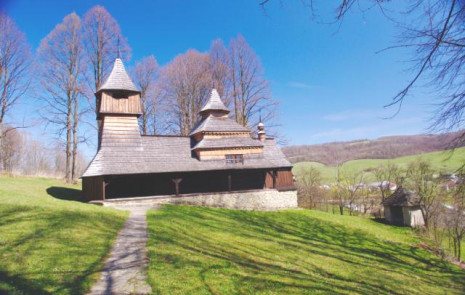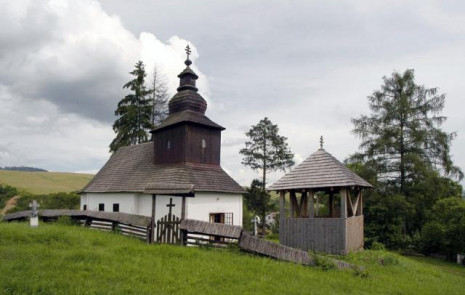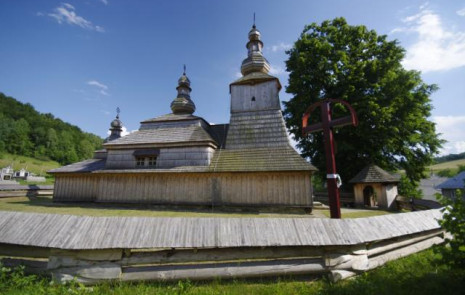


Wooden churches
Each part of Slovakia hides a gem that is characteristic of the area. Such a jewel of eastern Slovakia are certainly the wooden temples, which are unique and there is nothing similar to them anywhere in the world.
On the one hand, the temples were a reflection of the fragility and misery of man, but they were also a reflection of man's unbreakable and unshakable trust in God, who was often the only and last hope in life. Man wanted to thank God as best he could, and so he built the temple as a place where he could properly and reverently glorify God. The only inexpensive and available material he could use was wood. The entire interior and exterior, down to the smallest detail, was thus made of this material. An interesting feature of these buildings is that no nails were used in their construction.
Most of these wooden churches were built in eastern Slovakia in places where Catholics of the Eastern Rite settled. Especially in the north of eastern Slovakia, 42 wooden churches have been preserved to this day, mostly on their original sites, which were built in different time periods between the 17th and 19th centuries. The temples are not dominated by luxury and splendour, but by simplicity and truthfulness.
Each of these temples is unique and exceptional in something different, but all of them have in common the division of the interior into three basic parts, namely the narthex (the nave), the nave and the sanctuary. The dominant feature of each church is the iconostasis, which separates the sanctuary from the nave. It is a wall composed of several rows of icons, arranged according to a precise liturgical canon. It is characteristic of each of the icons that it was inscribed on wood and that it harbours a profound symbolism. Symbolism is a dominant feature of the entire Eastern Rite, not only in the writing of the icons, but also in the celebration of the various services and devotions.
We can therefore be justly proud of all that our ancestors have created and preserved for us. These cultural and spiritual monuments rightly deserve our protection and care, so that we may have something to pass on to our children as a wonderful legacy from our fathers.
On the one hand, the temples were a reflection of the fragility and misery of man, but they were also a reflection of man's unbreakable and unshakable trust in God, who was often the only and last hope in life. Man wanted to thank God as best he could, and so he built the temple as a place where he could properly and reverently glorify God. The only inexpensive and available material he could use was wood. The entire interior and exterior, down to the smallest detail, was thus made of this material. An interesting feature of these buildings is that no nails were used in their construction.
Most of these wooden churches were built in eastern Slovakia in places where Catholics of the Eastern Rite settled. Especially in the north of eastern Slovakia, 42 wooden churches have been preserved to this day, mostly on their original sites, which were built in different time periods between the 17th and 19th centuries. The temples are not dominated by luxury and splendour, but by simplicity and truthfulness.
Each of these temples is unique and exceptional in something different, but all of them have in common the division of the interior into three basic parts, namely the narthex (the nave), the nave and the sanctuary. The dominant feature of each church is the iconostasis, which separates the sanctuary from the nave. It is a wall composed of several rows of icons, arranged according to a precise liturgical canon. It is characteristic of each of the icons that it was inscribed on wood and that it harbours a profound symbolism. Symbolism is a dominant feature of the entire Eastern Rite, not only in the writing of the icons, but also in the celebration of the various services and devotions.
We can therefore be justly proud of all that our ancestors have created and preserved for us. These cultural and spiritual monuments rightly deserve our protection and care, so that we may have something to pass on to our children as a wonderful legacy from our fathers.
.jpg)
.jpg)
.jpg)